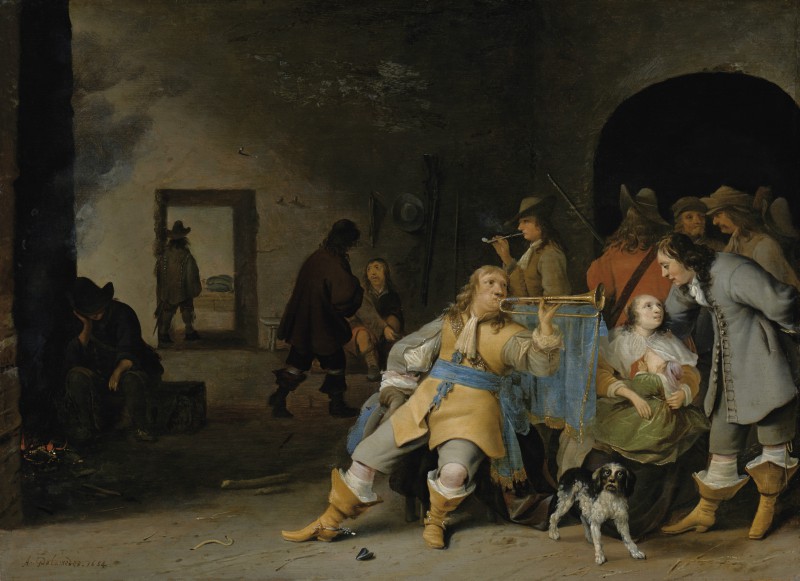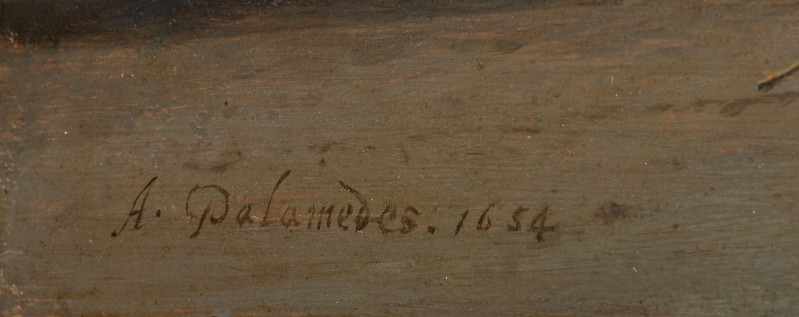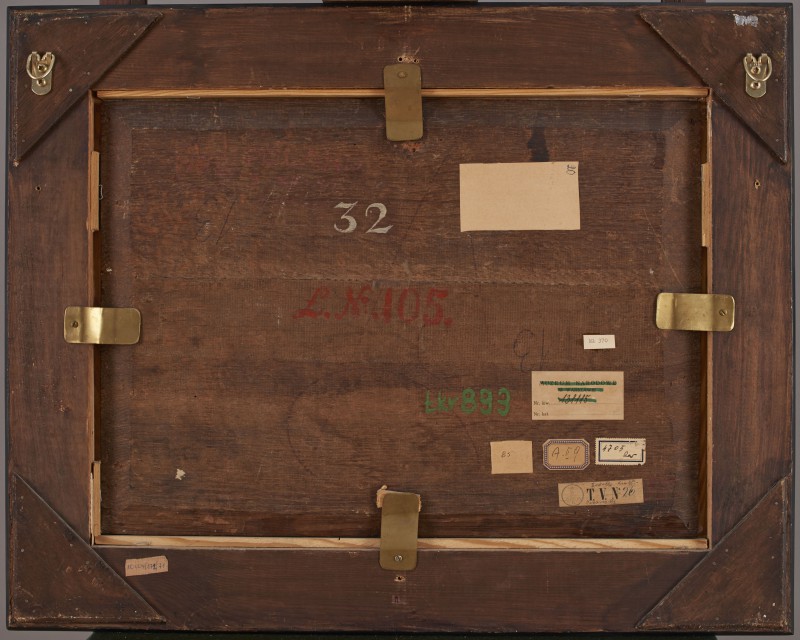A Guardroom Interior with a Trumpeteer
- Date
- 1654
- Object type
- painting
- Technique
- oil
- Material
- oak
- Dimensions
- 36,5 x 50,0 cm
- Acquisition date
- 1792
- Location
- The Palace on the Isle - Portrait Room, ground floor
- Marks and inscriptions
- signed and dated A. Palamedesz. 1654, bottom left
- Place of Origin
- Netherlands (Europe)
- Owner
- The Royal Łazienki
- Museum number
- ŁKr 893
The painting was the property of a renowned collector, Nicolaas Nieuhoff (1733–1776) in Amsterdam (see also cat. no. 111). It was put up for sale at a posthumous sale of his collection in 1777 … and came into the Stanisław August collection after 1783, but before 1792 … .
…
Palamedesz. was the first artist in Delft to paint guardrooms—so-called Cortegaerdjes or Kortegaertges—inspired by work of artists from Amsterdam and Haarlem, such as Pieter Codde, Willem Duyster and Dirck Hals, … .
…
The Cortegaerdje representations—although above all conceived as picturesque scenes of an adventurous life, attractive to the viewer—also contain a didactic meaning. Soldiers … are shown while at rest, indulging in amusements: cards, smoking, drinking wine … , and therefore in pastimes associated with moral weakness.
In his guardroom pictures Palamedesz. usually included a figure of a woman feeding a baby—which is a key motif for the interpretation of the subject of the scene. He was the only painter to depict women in the role of a mother and not as a person of loose morals. This motif, … , can be regarded as the painter’s inventio … .
In 17th-century Holland, motherhood was considered the most important womanly virtue; in Palamedesz.’s guardroom, the archetypical representative of a man’s world: soldier-warrior is juxtaposed with the archetypical figure of femininity, as personified by the woman nursing her child. Here the worlds of war and peace also meet: the figure of the trumpeteer calling the soldiers to fulfil their military duty is the figure of Mars; and the woman who is not paying any attention to him, who instead is nursing and pacifying her child, is Venus. … . [See D. Juszczak, H. Małachowicz, The Stanisław August Collection of Paintings at the Royal Łazienki. Catalogue, Royal Łazienki Museum, Warsaw 2016, no. 82, pp. 305–307.]





